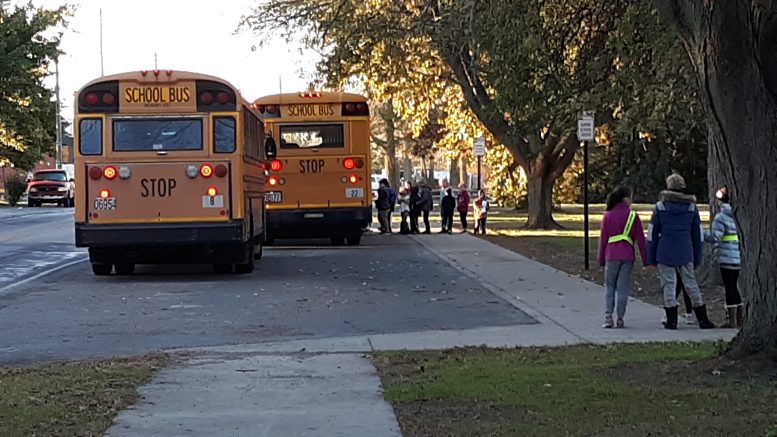By Susan Tebben
In a national survey on child well-being, Ohio was middle of the pack when it came to growth indicators.
The data, collected through the Annie E. Casey Foundation ranked Ohio 31st nationally in overall child well-being, calculated using indicators of economic well-being, education, health, and family and community context.
Compared to 2019 numbers, Ohio was considered improved in the categories of child poverty and teen school absence. According to the survey, 18% of the state’s children live in poverty, better than 23% in 2010, but slightly higher than nationally, where 17% of children are in poverty.
Child and teen deaths grew in the state, with 27 deaths per 100,000 in Ohio, up from 25 in 2010.
Obesity rates in children aged 10 to 17 also grew in the state, jumping 2% from 2016-17 to 2018-19. The state maintained its rate of low birth-weight babies, according to the study, with 8.6% of Ohio’s infants born at lower than normal birth weight.
The teen birth rate improved in the state, from 34 per 1,000 Ohio teens to 19.
The state ranks 28th in education, with fourth-grade reading proficiency staying the same as ten years ago, at 64%. The state improved in eighth-grade math proficiency and high school graduation rate, but the study showed 18% of high school students in the state are still not graduation on time. In 2010, the rate was at 20%.
Child care advocates in the state say it’s too early to tell the exact toll the pandemic had on graduation rates.
“But we know when children are emotionally healthy, they are better prepared to learn, and that’s why we need bold policies that meet the needs of Ohio students, such as ensuring every child can benefit from Student Wellness and Success Funds for mental and behavioral health care and other supports so that they can be ready to learn after such a hard year,” said Tracy Najera, executive director of the Children’s Defense Fund-Ohio, in a statement.
The survey comes amid state budget negotiations in the Statehouse. The House version of the budget included an overhaul of the public school funding meant to remove the burden on local school districts through direct state funding of the EdChoice private school voucher program and less of a reliance on property taxes to determine educational funding shares.
The Senate brought a version of the budget that has a different approach to school funding, which still directly funds EdChoice vouchers, but differs from the House version in terms of funding models for public schools. Teachers unions and education advocates across the state said they still favor the House version of the education budget, but negotiations are continuing on the final budget draft.
Child care leaders in the state have also criticized the Senate’s version of the budget, particularly efforts to remove the facility standard-setting model Step Up to Quality.
The child welfare study recommended expanded income support to help families afford child care and improved public schools and postsecondary education as part of its findings.
***
Also from Ohio Capital Journal:
Disability Rights Ohio concerned about budget item seeking oversight
A nonprofit watchdog advocating for the rights of Ohioans with disabilities is concerned about a budget proposal from the state senate to ramp up oversight of its own activities.
Disability Rights Ohio has been the state’s designated Protection and Advocacy system since 2012, tasked with helping oversee the care of individuals with disabilities and informing them of their personal rights.
All 50 states have such designated groups that are meant to provide an independent check on the public care system. A proposal to institute legislative oversight of Ohio’s group has its leaders fearing the change would have a “chilling effect” on its work.
The state senator who pushed for the change has said it is in the best interest of Ohioans with disabilities. READ MORE
Settled into new homes, refugees in US say they are working for a better life for all
Violence, persecution and wars amid a global pandemic added to the growing number of displaced persons around the world last year.
The United Nations reports that 11.2 million people were displaced from their homelands in 2020, bringing the total number of displaced persons in the world to 82.4 million.
Of those forced to flee their homes, 1.4 million had to leave their country. According to the U.N., Turkey hosted the largest number of refugees in 2020, taking in just under 4 million people, the majority coming from Syria. Colombia was next, taking in more than 1.7 million displaced Venezuelans. Germany, Pakistan and Uganda also are in the top five hosting countries, with each resettling more than a million people.
The United States was far below those numbers, resettling 11,814 refugees last year.
President Joe Biden, who campaigned on promises of facilitating immigration and increasing admissions for refugees, recently, increased admissions from 15,000 to 62,500. Immigrant rights activists say more needs to be done. READ MORE





